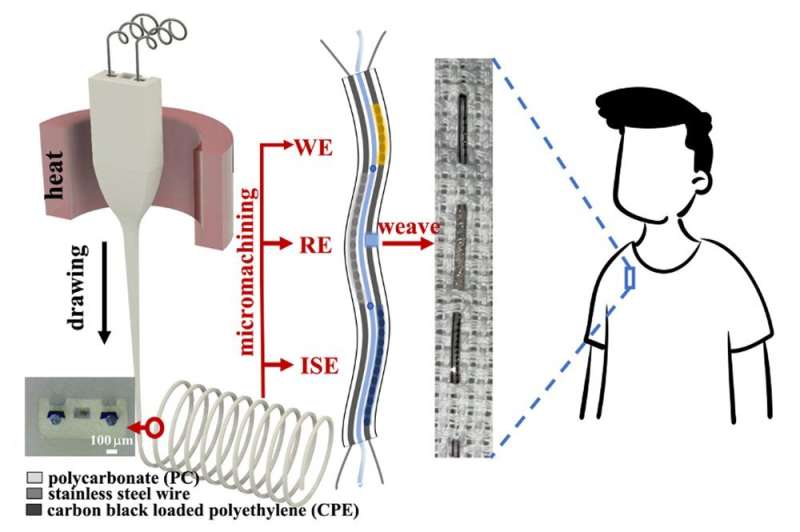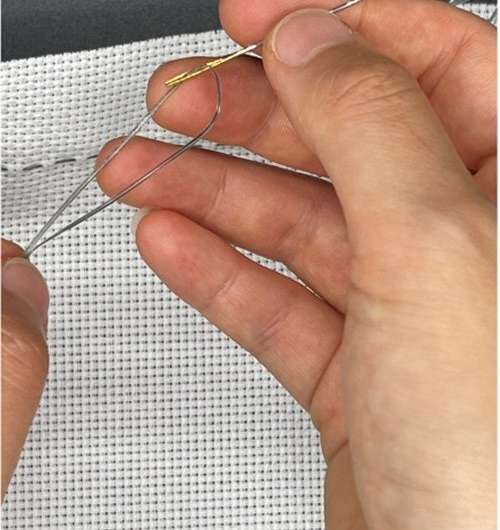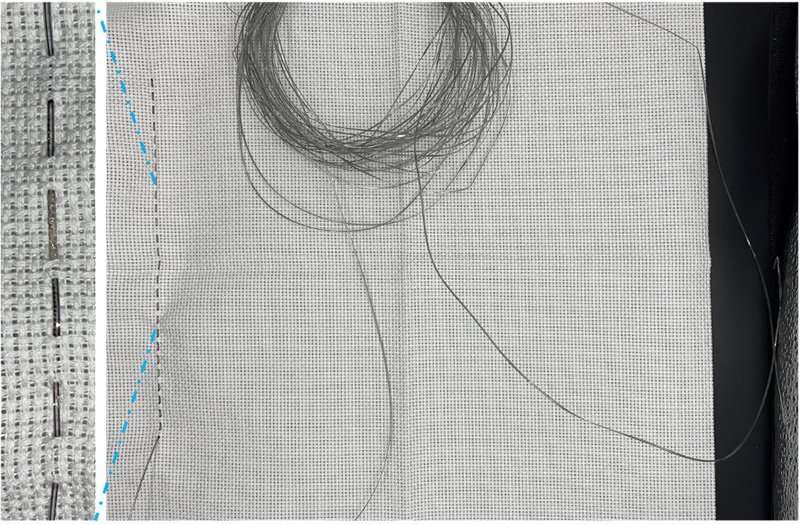This article has been reviewed according to Science X's editorial process and policies. Editors have highlighted the following attributes while ensuring the content's credibility:
fact-checked
peer-reviewed publication
trusted source
proofread
Analyzing sweat via microelectronic fibers for noninvasive health monitoring

Imagine if a t-shirt could analyze sweat, potentially alerting the wearer to any health abnormalities. Well, this is now closer to reality thanks to a research group's recent innovation.
Fibers and fabrics are ever-present in our daily lives, and their origins are intertwined with the history of human civilization. Although centuries of human progress have unfolded, much remains unchanged for fibers and fabrics.
Yet recent advancements in the multi-material fiber drawing process have ushered in a new era of multifunctional, fiber-based smart fabrics.
Smart fabrics allow for the seamless integration of electronics, optics, biosensors, and mechanics into a thin strand of fiber that is intrinsically flexible and as thin as a human hair. These fabrics can then be used to monitor vital physiological signals related to our mental and physical health status.

Dr. Yuanyuan Guo, assistant professor at Tohoku University's Frontier Research Institute for Interdisciplinary Sciences, led a team of researchers to develop a microelectronic fiber with microscopic parameters that is capable of analyzing electrolytes and metabolites in sweat. Its micrometer scale allows it to be woven into clothes for health care applications.
To produce the fiber, the group leveraged the versatile thermal drawing process, where heat is applied to draw out a micro-structured fiber from its macroscopic preform. The team also patterned two sensing electrodes for sodium and uric acid on the longitudinal surface of the fiber.
"Our breakthrough is the first successful attempt at using thermally drawn fiber in wearable bioelectronics for monitoring biochemical signatures," says Guo.

Although mainstream photolithography and printing technology have enabled wearable electronics, doing so often entails attaching fairly rigid electronic patches to existing fabrics or directly on the skin, leading to only a small area of the body being covered.
"Since most developments so far could not be considered clothes, we devoted our effort to transforming fiber, to make truly wearable smart fabric," adds Guo.
The fiber could lead to fiber-based smart clothes that provide greater versatility in functions, larger sensing areas, and greater comfort. The team believes that their developed smart fabric could revolutionize the textile and health care industries, benefiting human society at large.
The study is published in the journal Analytical and Bioanalytical Chemistry.
More information: Jingxuan Wu et al, Microelectronic fibers for multiplexed sweat sensing, Analytical and Bioanalytical Chemistry (2023). DOI: 10.1007/s00216-022-04510-9
Journal information: Analytical and Bioanalytical Chemistry
Provided by Tohoku University





















